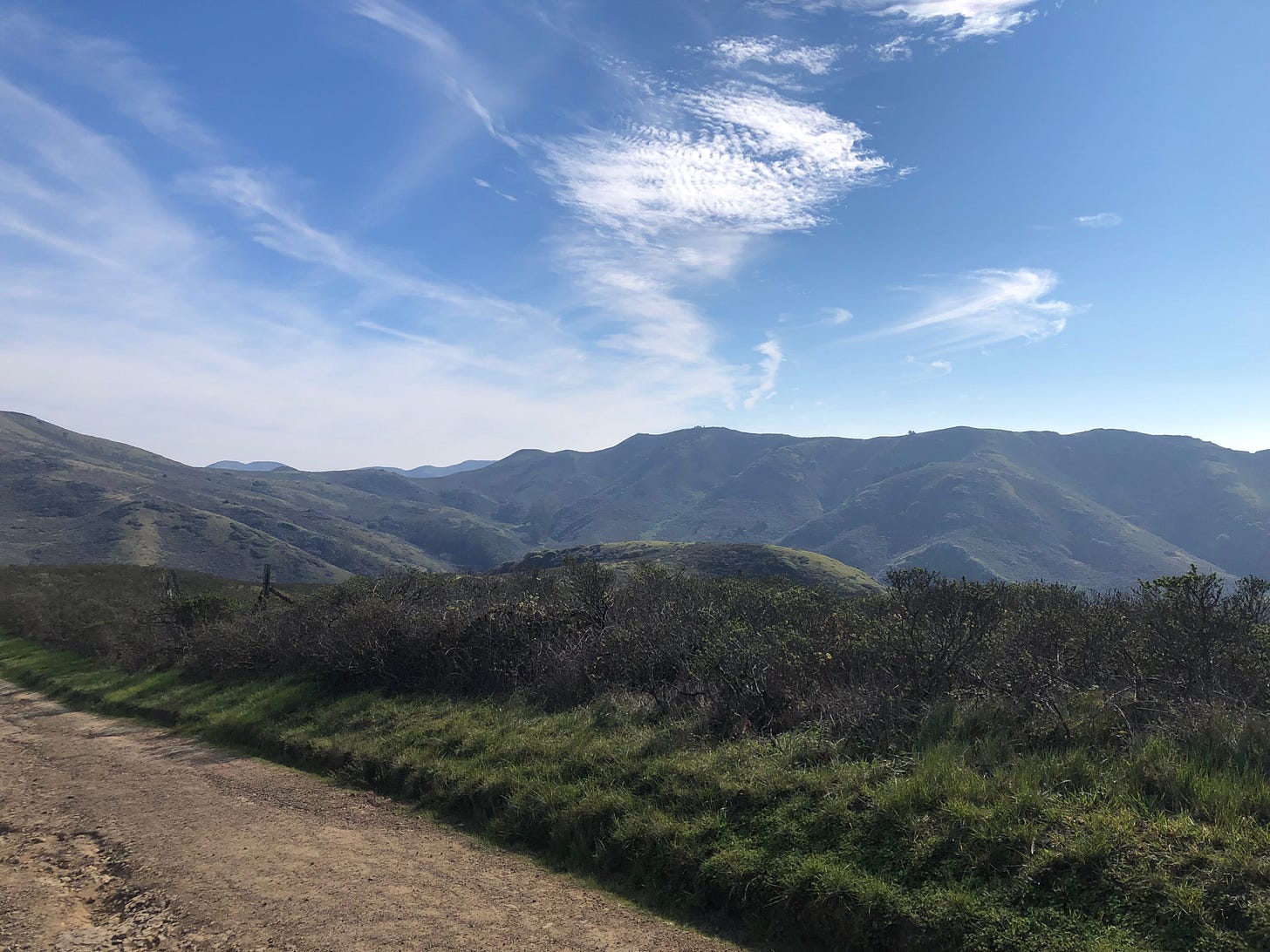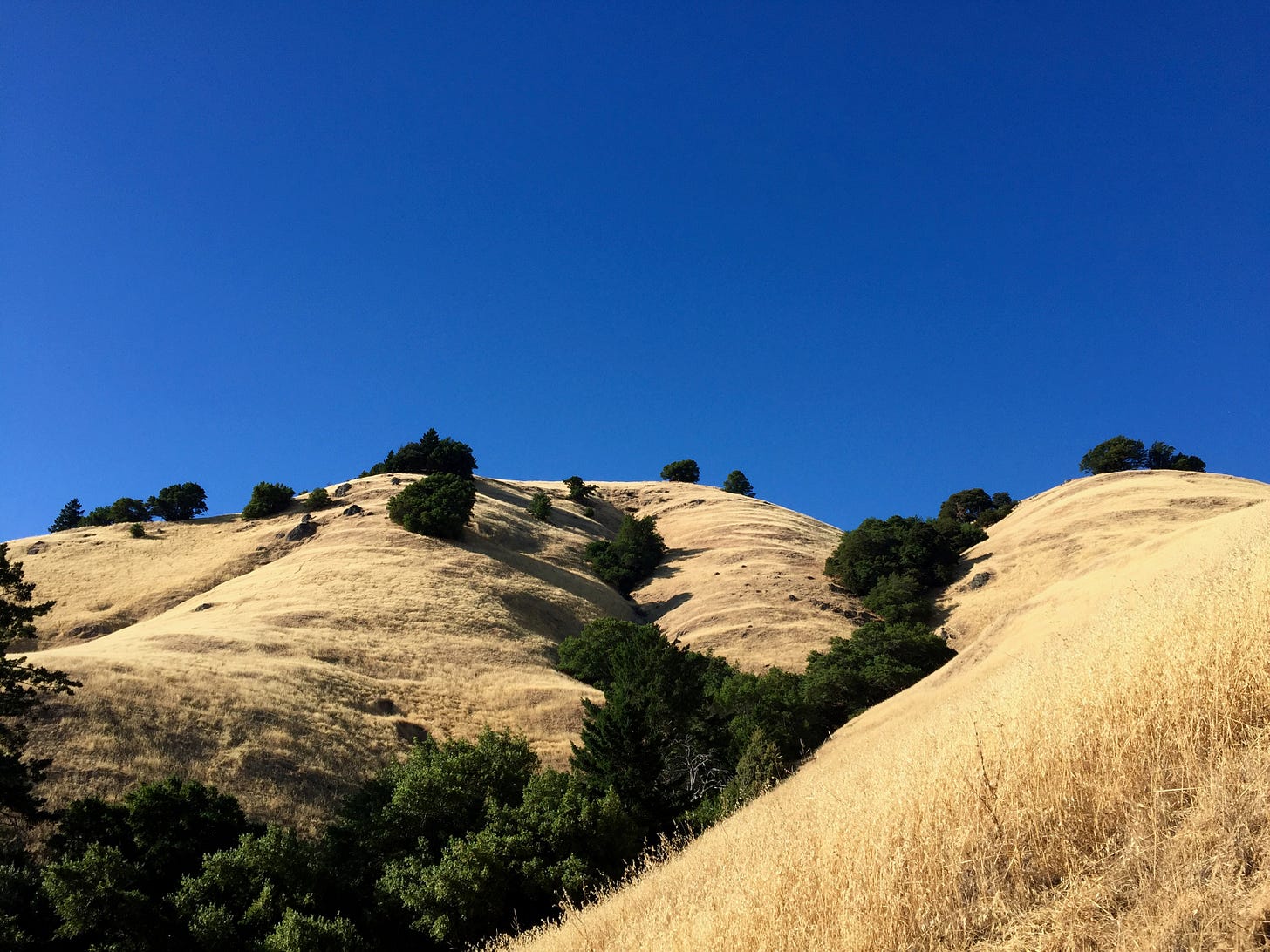“This is the most beautiful place on earth. There are many such places.”
— Edward Abbey
This month, I’ve been writing about our relationship to time. It can feel like a scarce resource. But can we reframe our view of time to one of abundance? Can we ensure we find time for the things that give our life meaning?
It’s not easy. I’ve found the time to write this newsletter because 1) I’m consulting rather than working at a full-time job, 2) I’ve set myself a weekly deadline, which keeps me going, and 3) I love writing. That last point is key; I have a million things on my To Do list (yes, I’m a list maker), some of which wouldn’t even take that long to do — but I put many of them off because I don’t enjoy doing them.
Still, we often don’t manage to make time for the activities we do enjoy. Those are often set aside as a reward for when we finish the more irksome things on our list — which can result in never getting to the things we really want to do.
What’s the solution? Obviously, it’s key to prioritize the things that are important to us. But that’s easier said than done. Most of us have to prioritize making money, shopping, cooking, doing laundry, taking care of bills and taxes … the list goes on.
For me, something that can too easily fall by the wayside is one of the things I love the most: hiking. Why does that happen? Time feels scarce. A hike with friends can be hard to schedule. It tends to take up a large part of a precious weekend day. It might involve driving a ways.


But there’s something about hiking that makes it a particularly good use of time.
To illustrate, I’ll invoke George Lakoff, a UC Berkeley professor of linguistics and cognitive science. Among his many valuable contributions is pinpointing strategic initiatives as the best way to get things done. As Lakoff sees it, a major problem for progressives is that they want to fix everything; because of that, they spread themselves too thin and lose effectiveness. He suggests that instead, they focus on a few strategic initiatives. A strategic initiative, he says, is “a plan in which a change in one carefully chosen issue area has automatic effects over many, many, many other issue areas.”
Lakoff is referring specifically to policy actions, such as tax cuts proposed by conservatives: “This seems straightforward, but as a result there is not enough money in the budget for any of the government’s social programs. Not just not enough money for, say, homelessness or schools or environmental protection; instead, not enough money for everything at once, the whole range.” Sadly, the conservatives provide more examples of strategic initiatives than the progressives, because they’ve done much better at focusing on those.
In our daily lives, strategic initiatives don’t have to be limited to policy. We can think of strategic initiatives as actions that deliver multiple results all in one stroke.
Looking at hiking in this way, its value becomes all the more clear. What makes it worth doing? For me, hiking satisfies a number of critical needs: beauty, nature, exercise, stress relief, fresh air, time offline, and social time with friends.
The first two, like a Venn diagram, overlap but also have separate aspects. Often, hiking in the gorgeous settings of northern California makes me think of the lines quoted above. The beauty in this area is spectacular.

Yet there’s so much more to nature than that. Walking in nature is good for us on so many levels. For those of us who live in an urban environment, being around grass and trees and wild creatures is restorative. A park or backyard are nice, but they don’t satisfy me the way a wilder place does. Wild places can remind us of our connection with other beings and with our larger world; I’ve often thought of nature as my church.
The benefits don’t stop there. The exercise you get going up and down the hills in the San Francisco Bay Area is significant, even aerobic. By the end of the day, your lungs are full of fresh air. Being off the computer for the day is so restful. Spending time with friends is a huge bonus; a chance to gather friends who are normally spread out around the Bay Area and hang out with them for hours is always welcome. (Hiking alone, which can be meditative and restorative, comes with its own benefits.)
I’m thankful to live in a place that’s close to so many wonderful hiking trails, yet I find myself not always making the time to enjoy them. In our busy modern lives, it’s challenging to allow time for the important things. Like the progressive that I am, I tend to want to do it all — which can lead to accomplishing very little.
Every now and then, when considering whether to go on a hike, I remind myself that it’s a strategic initiative. Sure, it’s my love of hiking that gets me out. But this reminder can sometimes give me that extra push I need to prioritize hiking.
Is there any activity you enjoy that can be considered a strategic initiative? Let me know in the comments!









I, too, am a hiker and have not been hiking enough lately. You're inspiring me to do so....this weekend!
I love this. It’s helping me prioritize fun things! But especially hiking and getting in shape to hike more. For me, this kind of strategic initiative definitely needs to be fun and something I want to do, otherwise it ends up feeling like a thing that I “should” do. Helpful post, thanks!